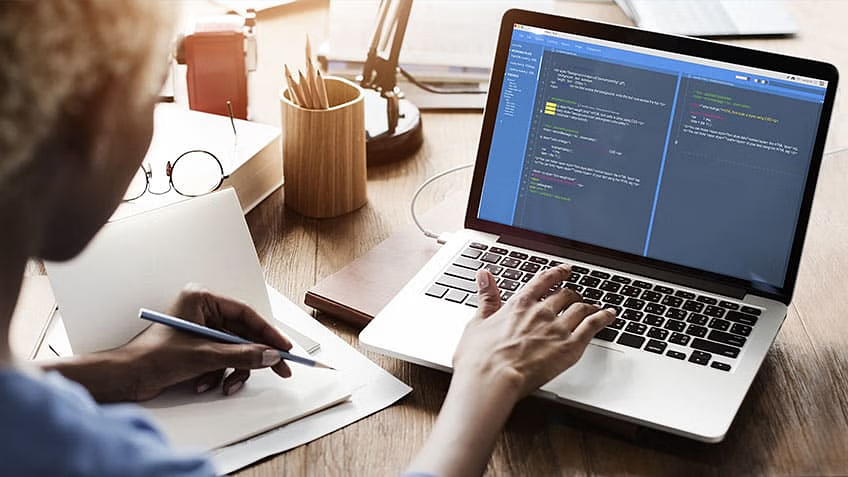Digital Pathways: How Technology Is Transforming IB Education
Juggling multiple subjects, extended essays, and internal assessments can feel overwhelming for IB students, and equally challenging for educators trying to keep lessons engaging and effective. The IB curriculum is known for its depth and complexity, but integrating the right technology can make a real difference in this process.
Using digital tools has become an essential part of education in today’s landscape. This guide explores how technology is enhancing IB classrooms, supporting student success and empowering educators.
How Technology Enhances the IB Learning Experience?
The IB curriculum is known for being student-centered, and when you combine the right technology with it, it opens even more doors for both learners and educators. Here’s how technology makes a real difference in IB classrooms:
- Supports Independent Learning: IB students are encouraged to take ownership of their education. Digital tools, such as interactive apps, online research platforms, and learning management systems, help them explore topics at their own pace.
- Makes Collaboration Easier: Group projects and discussions are part of daily life in IB education. Tools like Google Workspace or Microsoft Teams let students share, discuss, and co-create, even when they’re not in the same room.
- Improves Access to Resources: From digital libraries to curated online content, technology provides IB learners with access to high-quality materials that extend far beyond the textbook.
- Encourages Creativity and Innovation: Whether it’s building a digital presentation, designing a science experiment simulation, or coding a small project, technology gives students new ways to express ideas and solve problems creatively.
Best Practices for Using IB Education
Technology can do wonders, but only when it’s used with purpose. In IB education, where critical thinking and inquiry are the most important aspects, the way digital tools are integrated matters just as much as the tools themselves.
Here are some best practices that schools and educators are using to make tech work effectively in IB classrooms:
Flipped Learning Lectures
The flipped learning structure is a powerful strategy for blending technology with IB education. With this method, students explore recorded lessons and digital content before arriving in class. This way, classroom time can focus on teamwork, interactive tasks, and deeper discussions.
Digital Collaboration Tools
Digital platforms like Google Workspace and Microsoft Teams facilitate easier collaboration, idea exchange, and peer feedback among IB students, extending beyond traditional classroom walls. These platforms promote consistent communication, group participation, and help students take initiative in their learning process.
Virtual Labs and Interactive Tools
Virtual experiments and technology-driven simulations provide IB students with a hands-on approach to engaging with science subjects. For subjects like IB Chemistry, virtual experiments allow learners to test reactions or study compounds that may be too hazardous or expensive to recreate in a physical setting. These tech resources deepen understanding and make learning more immersive and impactful.
Customized Learning with Smart Technology
Intelligent learning systems powered by AI can adjust lessons in real-time based on each student’s needs. These tools evaluate students’ performance and adjust lesson content or pacing to match individual strengths and areas for improvement.
Using adaptive technology in IB classrooms helps educators ensure that all students receive the right amount of support and challenge tailored to their individual needs.
Key Innovations Shaping the Future of IB Classrooms
As education continues to evolve, progressive schools are adopting innovative approaches that redefine how students learn, engage, and collaborate. Here are some examples of how innovation is shaping the future of IB:
Virtual Reality (VR) for Immersive Learning
IB learners can explore historical sites, ecosystems, or even outer space, without leaving the classroom. VR experiences bring abstract concepts to life in a way that textbooks can’t.
AI-Powered Tools for Personalised Support
Artificial intelligence is providing students with instant feedback and tailored guidance, with the help of intelligent tutoring systems and writing assistants, especially in self-paced IB learning modules.
Collaborative Platforms for Global Projects
Tools like Google Workspace and Microsoft Teams enable IB students from different schools or countries to work on shared projects, promoting intercultural exchange and digital collaboration.
Why EDU-RADIATION TUTORIAL is the Smart Partner for IB Learners
EDU-RADIATION TUTORIALS provides tailored guidance for students and schools seeking to excel in IB education through structured, technology-integrated learning. Here’s what we offer:
- Comprehensive Support: We provide extensive support for IB subjects, including Mathematics, Physics, Chemistry, Biology, Accounts, Eco, Geo, English, French, and Spanish.
- One-On-One Tutorials: These tutorials are designed to reinforce key IB concepts and principles.
- AI-powered Learning Hub: We offer interactive resources, progress tracking, and smart study paths.
- Parent-Centric Collaboration: This approach keeps the families involved through regular updates, progress reports, and open communication.
- Experienced IB Educators: Our expert team of IB educators brings subject clarity and offers exam-ready strategies.
Conclusion
Today’s students need more than heavy textbooks and traditional lectures, they need interactive tools and guidance in their IB journey. That’s why integrating technology in education has become essential.
Supporting this kind of growth requires a structured, thoughtful approach, something that platforms like EDU-RADIATION TUTORIALS have fully embraced. By combining AI-powered learning hubs with personalized mentorship and parent-focused collaboration, we are helping IB students stay engaged, focused, and confident throughout their journey.
EDU-RADIATION TUTORIALS brings academic clarity with a modern approach.
FAQS
How is technology improving the IB learning experience?
Technology enhances IB education by enabling interactive learning, providing instant access to global resources, and supporting differentiated instruction through adaptive platforms.
Are digital tools suitable for all International Baccalaureate (IB) subjects?
Yes, from science simulations to language learning apps or the extended essay, technology supports learning across all IB subjects.
How can teachers maintain a balance between tech and traditional teaching methods?
Blending both methods is important. Technology should enhance, not replace, core IB teaching practices like inquiry-based learning, reflection, and student-led discussions.
What makes EDU-RADIATION TUTORIALS different in supporting IB learners with technology?
EDU-RADIATION TUTORIALS offers a dedicated AI-powered learning hub and a Parent-Centric Collaboration model, ensuring students receive personalized support while parents stay informed and involved throughout the IB journey.






